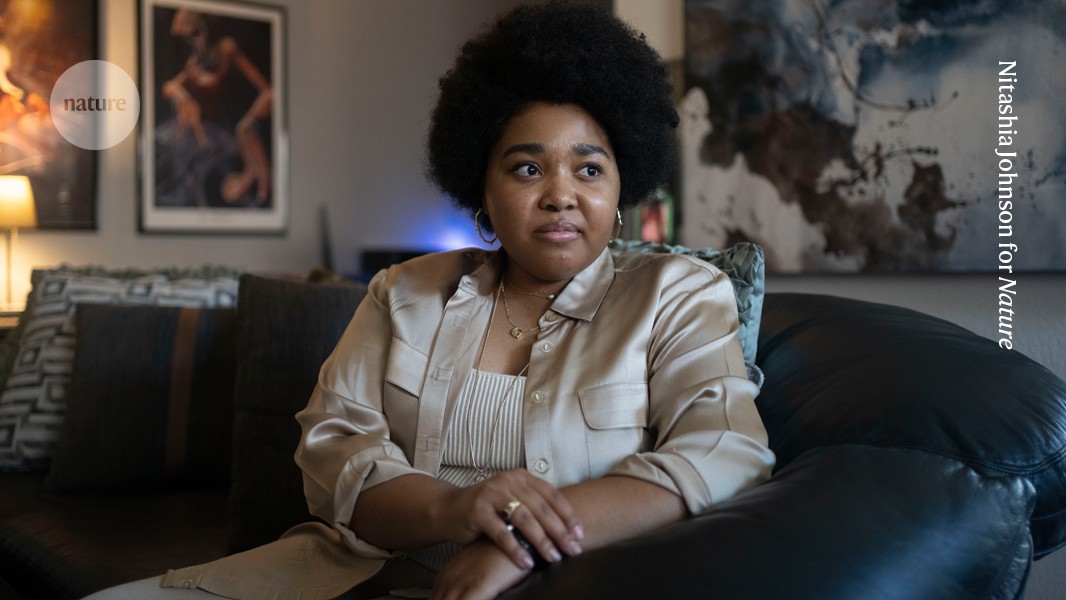Can stem-cell transplants and gene therapies help keep sickle-cell disease alive? A case study of Maryland women who received chemotherapy at Vanderbilt University Medical Center
Neither of these gene therapies corrects the mutation that causes sickle-cell disease, and neither can be considered a cure. The incidence of acute pain crises is greatly reduced and there is hope that those benefits will last. In December 2023, biotechnology company Bluebird Bio in Somerville, Massachusetts, which makes Lyfgenia, reported that the therapy’s benefits were durable for at least five years3. The company continues to follow participants in its clinical trials to see how long the effects last.
In addition to infertility, the chemotherapy can increase the risk of bone degeneration, which is already elevated in people with sickle-cell disease. There is a risk of cancer associated with theChemo regimen. DeBaun is hopeful that new transplant protocols that use lower doses of chemotherapy will reduce the chances of these side effects.
Woolford, who lives in a suburb of Baltimore, Maryland, reached out to a few cancer charities that offer assistance to try and retain fertility for women undergoing chemotherapy. “I don’t have cancer, but I’m getting chemo and radiation,” she explained. Perhaps you can squeeze me in? The answer was no.
Some barriers are falling, however. Steady work to improve transplant protocols has boosted success rates and lowered toxicity, says Michael DeBaun, who specializes in treating sickle-cell disease at Vanderbilt University Medical Center in Nashville, Tennessee. DeBaun and his team showed that stem cells from only partially matched donors could be used to transplant people with a specific kind of cell disorder who received a lower-than- usual dose of radiation and therapy.
Both stem-cell transplants and gene therapy require chemotherapy before the treatment. Chemotherapy takes a lot of time and is risky. Women who go through it are less likely to have children. They can opt to have their eggs frozen before treatment, but in the United States, the harvesting, freezing and storage of eggs typically costs more than $10,000.
Over the past decade, stem-cell transplants and gene therapies for treating sickle-cell disease have blossomed, offering fresh hope to people with severe illness. Researchers have improved protocols for stem-cell transplants, and the US Food and Drug Administration (FDA) approved two genetic treatments last year — including the first CRISPR-based genome-editing therapy the agency has ever authorized.
At the same time, gene-targeting therapies have also progressed. One therapy that works for people with the disorder is called LYFGenia and it provides a working version of the gene. The other therapy, called Casgevy (exagamglogene autotemcel), uses CRISPR–Cas9 genome editing to reactivate a form of haemoglobin that is normally inactivated soon after birth. This fetal haemoglobin helps to compensate for the dysfunctional version.
Jones’s Support Group: “The Journey of a Sickle Cell,” “Supahcell,” and the “Negative Problem of Life” in the United States
Over time, water in the vessels can cause damage to the organs and cause strokes. In the United States, people with sickle-cell disease have an average life expectancy that is some 20 years shorter than people without it1.
Some people need continued care. Chronic pain from decades of damage to organs and nerves can take longer to be mitigated, even for people who receive transplants. It doesn’t go away in three months so it is a source of disappointment for people. “The pain-sensation network in sickle cell is really disordered.”
But globally, few people with sickle-cell disease have received transplants, because of the difficulty of finding suitable donors, the expense and risks entailed in the procedure and the effects of systemic racism. Biased and discriminatory medical care is often a fact of life for people of sub-Saharan African or Indian ancestry, who are more likely to have the sickle-cell mutation owing to the prevalence of malaria in those regions. The mutation helps the parasite grow less in blood cells that are crescent shaped.
The Jones’s support group share their stories and experiences, sifting out misinformation along the way. The group was impressed by the drama series “Supahcell,” about a group of Black Londoners with a rare disease who develop powers. They groaned in shame when a member recalled their effort to get physicians to take their condition seriously.
A growing number of people having received genes for other conditions are worried about similar concerns. In the United States 30 gene therapies have been approved and more than 600 others are undergoing clinical testing. Clinicians and patients are not sure what to do with people who have been treated. Anirban has predicted thatGene therapy is going to change the entire landscape. This is coming.
Cell or gene therapy recipients feel like they have to fill the space left by the condition they have spent a lifetime fighting. “The disease becomes the narrative,” says Krishnamurti. It is difficult to change the narrative of a life.
Positive changes reported by transplant recipients included improved physical, mental and social health. But even among those who were happy with the outcome, some people struggled. Chronic pain and bone degeneration remained a problem for some recipients, as did feelings of isolation4. A lifetime of illness had made the hospital a source of trauma for some. They faced symptoms of post-traumatic stress disorder now that the ordeal was largely over. For others, the hospital was a second home, and they mourned the loss of that community when their health improved, says Dovern.
That in-betweenness extended to her medical care: because blood tests no longer indicated she had sickle-cell disease, physicians sometimes turned her away when she sought help for her pain. “They say, ‘Well, why are you here?’” she says. “Basically, you have to suffer alone at home.”
Genesis Jones had a painful blood disorder that affected her daily routine for most of her life. Each time she left the house, she ran through a mental checklist: did she have her pain medications? What was her energy level? Would she be able to make it through the day?
Less than one month after her transplant, Jones learnt that she had cancer, a known risk of the treatment. Three more rounds of chemotherapy and other treatments caused her cancer to be wiped out, but she still struggles with pain from decades of tissue and nerve damage from sickle cell disease. She is concerned that her stem cells are making immune cells to attack her heart, which she fears may be signs of mild cardiac inflammation.
The fight for long-term follow-up is a challenge for the wider field of gene therapy. A videographer in Manchester, UK, Jack Grehan, was treated for a blood-clotting disorder more than five years ago. For the first few years after receiving the therapy, he returned to the hospital for follow-up exams each time he was asked to come. But now he lives two hours away from the treatment centre and is juggling childcare and a new job. He has not had a single bleeding episode since receiving the treatment, and he stopped going to check-ups two years ago. I will return and give them more once my life is back in order, he says.
There is an opportunity for the data to be gathered to address these questions as the therapies expand into hospitals. If the FDA’s suggestion is to be believed, manufacturers of gene-therapy should collect data from the recipients for up to 15 years after treatment. Researchers outside those companies are also setting up a registry to track recipients of sickle-cell gene therapies, he adds.
DeShawn Chow, 19, is one of the patients on that path. The City of Hope Children’s Cancer Center in Los Angeles was where he started his treatment. His insurance is paying for the treatment, and he’s not concerned about the effect it might have on his ability to have children.
Gray says a lot of people are suffering and dying every day. “And we have something now that can put a stop to it. I want people to be free of worry, fear and the pain that comes along with it.
Bluebird Bio: How will patients afford the costs of their treatments and care? A case study on sickle cell gene therapies roll out slowly, says Adekanbi
More government and private insurers are paying for treatments and care as companies try to help patients afford them.
A lot of traction is on par with our expectations. So we’re very encouraged with what we’re seeing,” says Andrew Obenshain, Bluebird Bio’s chief executive officer. “The hospitals are set up and ready to treat. They are paying for it. The patients are interested.
But getting all the costs covered can be tricky. It’s unclear how most of the people who live in Africa and Asia who suffer from these genetic blood disorders will get them, given that the new therapies are not available in those places.
Adekanbi, 29, who lives in Boston, says he is battling himself. “Sort of like a dark, I don’t know if you’d call it like evil within, [but] sometimes it feels like [it].”
Source: Sickle cell gene therapies roll out slowly
“I can’t do that,” says a Nigerian woman in the throes of a rare genetic blood disease (Sickle cell gene therapies roll out slowly)
The rare genetic blood disease is caused by a genetic mutation that causes red blood cells to become deformed, sickle-shaped. Inflammation, pain, and damage are caused by these cells that are not properly labeled.
“It gets to the point sometimes where you’re like, ‘I cannot continue living this way,’ ” she says. “You feel like you’re losing your mind. Because sometimes I just can’t move. I lay in a single spot and try to ignore the pain.
One big hesitation is over the chemotherapy needed to make room for genetically altered cells in her bone marrow. The symptoms of the disease have been alleviated by the modified cells. She would not have enough kids if she were to be treated with the chemotherapy.
Adekanbi is not alone in wondering what to do. Of the thousands of patients who are eligible for the treatment and who have started the process, only 60 have started.
Adekanbi says she would try to freeze some of her eggs if she decides to proceed. But she and other potential patients are concerned about more than their fertility. The treatments are hard and complex in other ways.
Source: Sickle cell gene therapies roll out slowly
Treatment of Sickle Cell Diseases: Is There a Problem in the Local World? A Study by Vertex Pharmaceuticals and Bluebird Bio
Creary says that you could be in the hospital for months if you are diagnosed with the disease. If you are not in the hospital, you will need to be nearby the hospital which is in the state you live in. And then once therapy is finished, there is a very complex process of follow-up for many, many months, again potentially in a state that you don’t live in.”
Patients worry about long-term risks, according to the chief medicalofficer of the Sickle Cell Disease Association of America.
For their part, Vertex Pharmaceuticals of Boston and Bluebird Bio of Somerville, Mass., which make the treatments, say both therapies appear safe so far.
It is not surprising that it is taking more time to get the treatments widely accepted because of how expensive and complicated they are.

